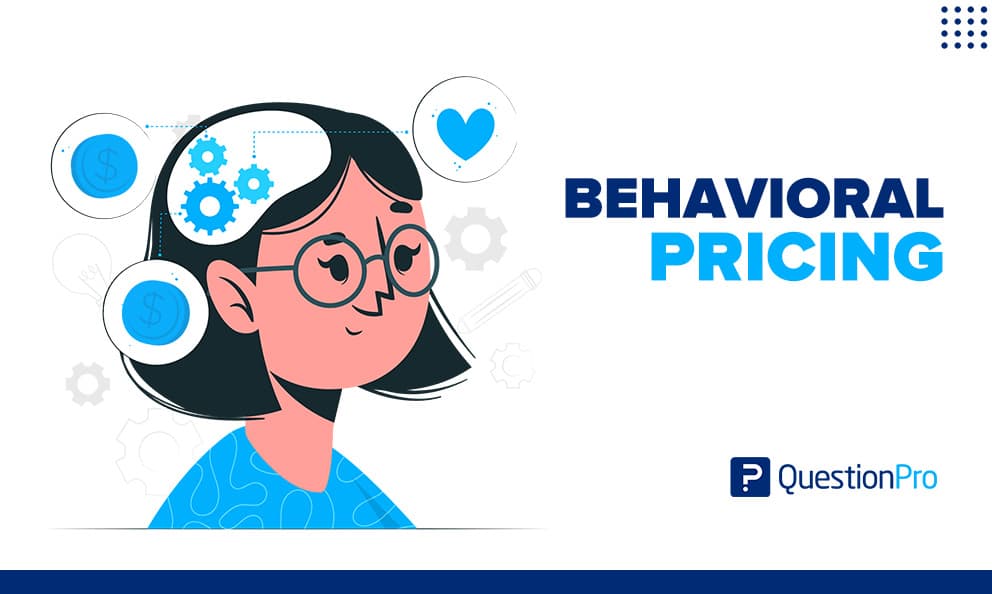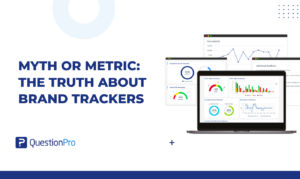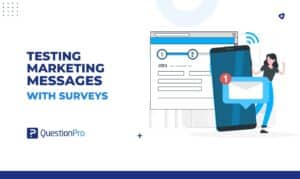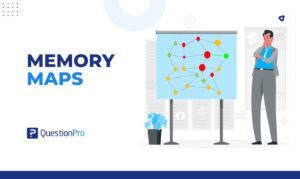
What if your shopping habits could actually shape the price you pay? Sounds surprising, right? That’s exactly what happens with behavioral pricing, a modern approach where companies set prices based on how customers really behave, not just market trends.
At first glance, it might seem like a clever trick to benefit businesses and leave buyers at a loss. But there’s more to the story. Many common beliefs about behavioral economics don’t quite hold up when you take a closer look.
By understanding buyer behavior from search history and purchase patterns to social media activity and demographics, businesses can develop effective pricing strategies that help customers feel relevant, timely, and even fair. Curious how it all works? Let’s explore real-world examples and learn how behavioral pricing helps shape smarter business decisions.
What is Behavioral Pricing?
Behavioral pricing is a method of setting different prices based on the patterns of consumer behavior. Large amounts of relevant data are analyzed to uncover consumer behavior patterns. It’s also a component of the larger field of behavioral economics.
Simply expressed, in a traditional pricing strategy, rational variables are thought to influence consumer behavior. Customers receive complete pricing information, and all customer choices are very obvious. The consumer chooses a value (the product) and expects that by making this purchase, his advantages from that good will be maximized.
Customers don’t always react logically, and such cost-benefit models often fail to account for this. They behave differently from the classical pricing theory’s assumptions; they assess a price based on a variety of criteria, such as the manufacturer’s reputation or their own money. They don’t act predictably either. They can pause their search for a product and resume it later. They have trouble remembering pricing and making precise comparisons.
As a result, purchasing decisions appear to be dependent on many factors. Pricing analytics has many facets, and rational considerations are just one of them. In classical theory, consumer research, emotional, and especially cognitive factors have a minor impact. This research focuses on behavioral aspects to better understand how your target audience customers decide on a product’s pricing.
It’s a sort of discrimination based on pricing. Price discrimination aims to increase profits by altering the prices that various consumers pay depending on information about the client.
Examples of Behavioral Pricing
Let’s say a customer wants to buy a summer midi dress. She does research using Google and visits a variety of online stores and merchant platforms. One store employs behavioral pricing and keeps track of its visits. The merchant may also read relevant data, such as the browser’s search history or the website’s breadcrumbs.
The customer first leaves the site but returns soon afterward to look at the product page. The shop knows this customer is eager for that product since he or she has already visited the product page. You can call it tracking consumer psychology.
If the customer returns to this product page, the vendor may use this information to hike the cost of the summer midi dress. This does happen in practice. When customers visit certain retailers and product pages many times, the pricing of items is modified marginally-for instance, by 5%. It is a sign that the customer must act on. She anticipates that the reference price will grow further. She interprets the pricing information. She processes and assesses it to elicit a reaction and action. She recalls the pricing from her initial visit to the product page.
You may believe that a dessert shop only sells a few sorts of desserts. Apple sells a restricted number of things. A retailer may manage hundreds of thousands of SKUs at the same time. The challenge is, how can it be implemented in a broad retail setting?
There was a little substitute for the manual effort of a price analyst or manager suitable for evaluating various pricing techniques to determine how they related to behavioral changes in demand and business indicators, twenty or even 10 years ago. This indicates that merchants would have had a difficult time scaling up effective behavioral analytics strategies to portfolio-based pricing.
Key Strategies to Follow in Behavioral Pricing
People tend to believe that only market giants, such as Amazon or Apple Inc., can manage to rely on this. There are, however, several basic yet effective pricing strategies that all sorts of merchants may apply. Let’s take a look at some practical measures that might help you get started with price matching:
The three-fold rule
It’s usually best to provide clients with at least three alternatives to pick from. You may call this approach “good-better-best” or anything you like, but you must ensure that your clients can make their own decisions rather than being offered a single choice with no alternatives.
Nudges by default
Give your clients a variety of choices. It can enhance the possibility of attracting customers to make a specific purchase. In most circumstances, it means purchasing a better or superior choice. A solid example of how default nudges may be employed in practice is presenting the price as the “best value for money,” “best offering,” “best price,” and so on.
The Power of “Free”
You don’t need to know behavioral science to understand how the word “free” works for buyers. Give clients the option of receiving a complimentary recipe book when they purchase high-priced kitchen equipment, and sales will rise.
Threshold pricing
Pricing thresholds are defined as unseen zones where customers’ willingness to pay reaches a given degree. For example, a lot of consumers are willing to pay less than $1 for a medium-sized chocolate bar. And as soon as the price exceeds 1 euro, the desire to pay plummets. It is critical to be mindful of the pricing threshold to maximize margins while maintaining consumer loyalty.
Anchors for prices
The example of Apple Inc. launching a new phone at an unnecessarily high price that was quickly reduced is an outstanding demonstration of how price anchoring works. You may illustrate how effective price anchors are by crossing out the first high price and writing down the more appealing one.
The impact of endowments
Getting something extra when you buy anything is a significant motivator for every buyer. Obtaining a loyalty card, the option to return or exchange an item, and other supplementary services provide clients with the added value that they desire.
Looking to boost your revenue? See how Pricing Analytics Software can uncover the pricing sweet spot for your customers.
Conclusion
This blog explains how to best use behavioral pricing in your company’s business. The customer behavior is used to decide the price of a product. Find out in detail with examples and a how-to on how to use this approach in your business. One store employs behavioral economics and keeps track of its visits. When customers visit certain retailers and product pages many times, the dynamic pricing of items is modified marginally.
It is a sign that the customer must act on and anticipates that the price will increase further. Giving clients a variety of choices doesn’t rule out the possibility of persuading customers to make a specific purchase. Give clients the option of receiving a complimentary recipe book when they purchase high-priced kitchen equipment, and sales will rise. Price anchoring works by making the price the best value for money.
Find out what information is most important. You can conduct behavioral pricing research properly using QuestionPro.
QuestionPro is the ideal behavioral pricing research and pricing survey software for uncovering complicated insights that can help your company rise to the top of its sector.
Frequently Asked Questions (FAQs)
Answer: Behavioral pricing works by analyzing consumer data like shopping patterns, search history, demographics, and online behavior to understand how buyers react to prices. Businesses use these insights to set prices that influence customer trust and maximize profit.
Answer: Examples of behavioral pricing include personalized discounts based on purchase history, dynamic pricing in e-commerce based on browsing behavior, and price anchoring strategies used during sales events to influence perceived value.
Answer: Traditional pricing relies on fixed factors like production cost, demand, and competition. In contrast, behavioral pricing focuses on how real customers behave and make decisions, considering emotional, psychological, and situational factors when setting prices.
Answer: Yes, behavioral pricing isn’t just for big brands. Small businesses can use tools like pricing surveys, CRM data, and purchase analytics to understand buyer behavior and adjust pricing strategies accordingly.
Answer: Businesses can develop effective behavioral pricing strategies by analyzing customer data, studying purchase patterns, testing price points, and using psychological pricing tactics like anchoring or nudges. Continuous monitoring and adjustment based on customer response are key.







